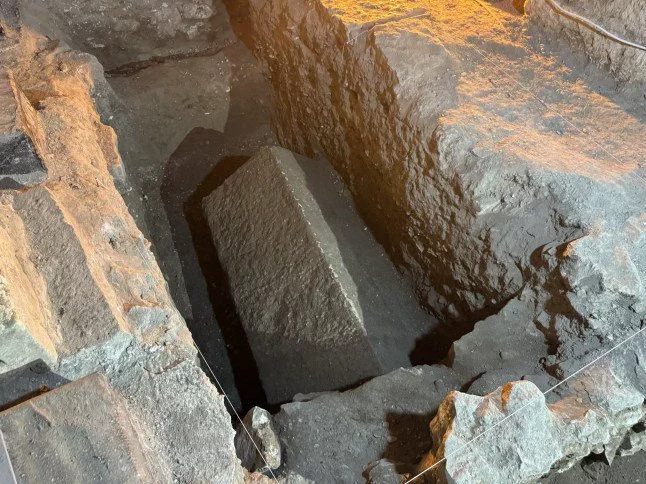
There are many mysteries about Santa Claus, such as: How does he get in your house if you don't have a chimney? How does he fit presents for every child in the world onto just one sleigh?
And most pressingly for archaeologists: Where was he initially buried in the ancient town of Myra, before his body was exhumed and transported to Italy?
We might finally have an answer, at least to the third question.
Archaeologists found a 'surprise sarcophagus' while excavating the church in Turkey where St Nicholas, the Christian bishop who inspired the legend of modern day Santa, is thought to have first been buried.
And in a double dose of St Nick this week, researchers recreated how he might have looked, using measurements from a skull believed to belong to him.


St Nicholas was a monk believed to have been born around 280 AD in Patara, in what we now call Turkey.
His charity and generosity were a widely shared legend, and he became the patron saint of children and an important figure in early Christianity.
Little is known for sure about his life and resting place. His body is thought to have been exhumed in 1087, with bones including his skull stolen and taken to Italy by sailors, both to protect the bones from invaders and to boost their own city's religious profile as a place for pilgrims.
The remains were interred in Bari, where they were enshrined in the Basilica di San Nicola, while some were also taken to Venice.
But not everyone is convinced by this version of events, with some believing his full skeleton could even remain buried at the church in Antalya.


Turkey's Ministry of Culture and Tourism commissioned excavations to find out more about his history, in the 'Legacy for the Future Project' led by Associate Professor Ebru Fatma Findik from Hatay Mustafa Kemal University.
In the ancient remains of his church, they reportedly found a limestone sarcophagus measuring 2 metres long with a raised lid and pitched roof, partially buried at 1.5m to 2m
'Our biggest hope is to find an inscription on the sarcophagus,' Professor Ebru told Anadolu Agency. 'This would help clarify the burial contents and allow us to determine the exact period it dates from.
'While the lid of the sarcophagus has been uncovered, only a small section of the burial chamber has been exposed, and further excavation is expected to reveal more details in the coming months.'
While she stressed that more work must be done to confirm if this burial chamber is St Nick's resting place, the discovery was promising and fills in more of the picture.

Meanwhile, facial reconstruction specialist Cicero Moraes sought to tell us more about his life by recreating his face from measurements of the stolen skull.
He created versions of the face using 3D modelling, some cleanshaven and some with a full beard, like Santa is thought to sport, detailing his efforts in Ortogmag.
It 'curiously generated an image compatible with the first engraving of Santa Claus, the one from 1863', he said, showing a wide face with an asymmetric nose.
He would have been about 70 years old at the time and 'healthy' and was potentially 'an individual with a strong physical build'.















Comments